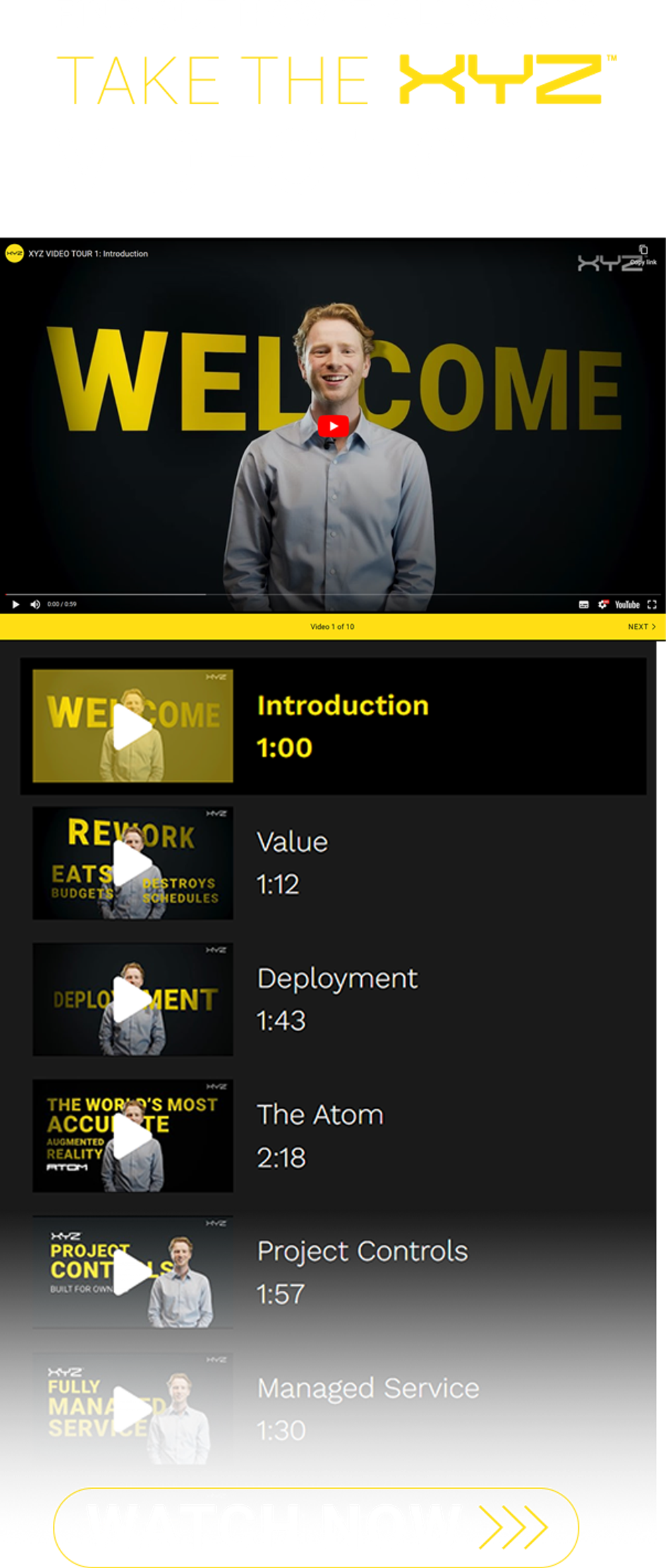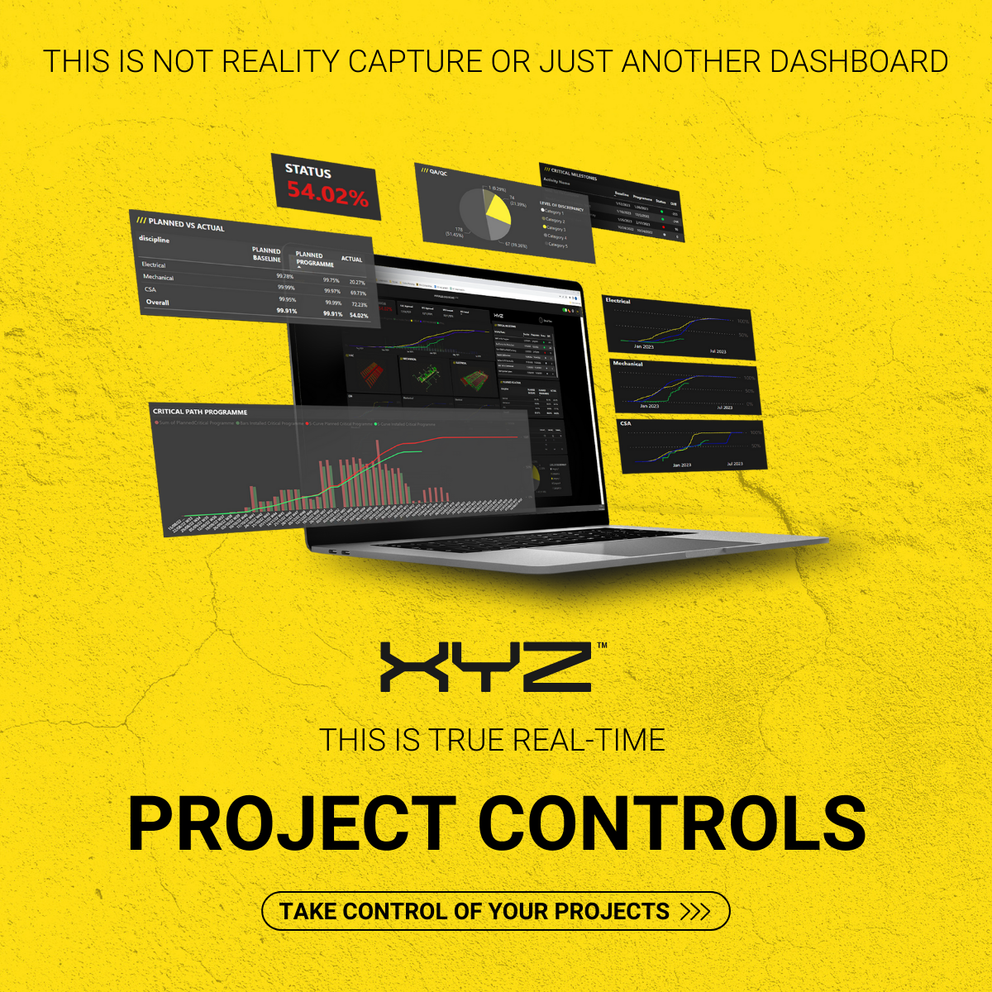-
Services
Services
Find out how we work with our clients and deliver value to construction projects from day one
-
Solutions
Solutions
Discover how all our solutions sync together to deliver construction's most powerful BIM platform to date
-
Built for
Built for
-
Industry
Industry
Understand how we support construction's biggest sectors, and hear from our clients who have experienced the power of XYZ
-
Resources
Resources
Get stuck into all our latest thought leadership, news, reports and industry leading content
-
Company
Company
Dive into what makes XYZ tick, unearth why construction is in our DNA and why we are world leaders in AR solutions

Insights
Exploring the use of Apple Vision Pro for construction

23 January 2024
As the VP of Product & Design at XYZ Reality, I am fortunate for the opportunity to observe immersive technology’s transformative effects on the construction industry from a unique vantage point. My role allows me to witness technological leaps forward first-hand.
One such development that caught my attention is Apple's foray into the world of mixed reality (MR) – a combination of virtual reality (VR) and augmented reality (AR) – with its Vision Pro device. In a previous blog, we delved into Apple's initial steps into the MR market, and now, it's genuinely thrilling to see their continued progress in this dynamic landscape.
Vision Pro represents an important progression in the world of immersive experiences. Its arrival signifies not just a masterclass in product diversification, something Apple has always been brilliant at, but a broader legitimization and acceleration of VR and AR technologies across various sectors.
It's an exciting time to be part of this rapidly evolving industry.
From living room to construction site: Vision Pro’s ultimate test?
Apple's Vision Pro, unveiled at the Worldwide Developers Conference (WWDC) 2023, is undeniably a remarkable piece of technology.
It boasts a suite of advanced features like dual 4K resolution displays, an innovative control system with voice inputs and advanced hand and eye tracking, a dozen cameras and sensors for gesture and environment mapping, as well as impressive spatial computing capabilities.
I am often asked how the Vision Pro compares to a device like Atom™ when used on a construction site. Yet, the key question for those in construction is: Can the Vision Pro handle the rigors of a building site?
Apple's device has been tailored predominantly for the consumer market, but the brand is also keen to highlight the impact Vision Pro can have in offices and workspaces. The marketing focus leans towards indoor usage, and it's unexpected for a first-generation consumer hardware piece to handle the unforgiving conditions of a construction site.
Let's delve into why.
Navigating PPE certification hurdles
Personal Protective Equipment (PPE) certification is paramount for any device intended for construction, and herein lies a list of major challenges for the Apple Vision Pro.
The first issue that springs to mind is the device’s incompatibility with necessary hard hat protection. Like most MR and VR devices, Vision Pro has not been designed to be used alongside a helmet, and as such is likely to be extremely cumbersome or unsafe in this respect.
Visibility is another issue. For instance, key eyewear standards (BS EN 166 and ANSI Z87.1) mandate a minimum level of see-through optical transmission for eye protection visors and there is currently no reference to camera-based systems being accepted by these construction PPE safety standards.
BS EN 166 specifies that when someone is wearing PPE, their eyes should be clearly visible through the optical visor within a certain oval area (diameter) that is defined around each eye. This safety standard ensures that the wearer can maintain eye contact with others, which is critical for safe communication.

Yet, a notable absence in the current adaptation of Vision Pro lies in the inside-out display of the user's eyes when wearing the device. The technology, achieved through cameras, doesn't seamlessly transmit the digital representation of the user's eyes onto the front screen. This aspect could potentially pose challenges in meeting regulatory requirements. While it's acknowledged that updates in such technology can be intricate and time-consuming due to the involvement of user safety considerations, if Apple chose to prioritize this aspect for the market, they could indeed navigate these complexities effectively.
Additionally, peripheral coverage is essential for the user's safety. While Vision Pro fares better in this regard than VR headsets which entirely block peripheral vision, the limited Field Of View (FOV) of Apple’s product will still block the users natural peripheral vision - an issue common to all MR devices and one that cannot be circumvented with pass-through cameras.
Lastly, many construction sites mandate no tint on visors for indoor use. The screen on the front of the Apple device is heavily tinted, which would undoubtedly lead to yet more safety issues.
Safety sits at the heart of every design decision we make and all relevant health and safety guidance, regulations and standards are accommodated in our product accordingly.
Purpose-built design
Anyone working in construction knows that tools need to be built to last and construction-ready hardware must withstand extremely demanding environments that isn’t experienced by the average consumer. Any device for use on-site that hasn’t been created specifically with things like dust and moisture exposure in mind will be ill-equipped for the demands of construction environments.
The choice of textiles utilized in the Vision Pro’s design, and the way these fabrics contact the user’s head and face, can lead to uncomfortable, or even potentially hazardous issues. For example, should these fabrics be exposed to sweat and concrete dust, the user could suffer concrete burns to their face as a result from extended use.

The long power cord and battery pack required to operate Apple’s device underscores that the entire design is oriented towards indoor entertainment and productivity rather than serving as a robust tool tailored for the demanding conditions of construction environments.
Further, the Vision Pro has not been designed to accommodate the use of gloves, a crucial personal protective equipment (PPE) requirement on construction sites. This limitation is particularly significant for insulated gloves needed in environments with potential mechanical or temperature exposure risks.
In contrast, we designed the Atom headset from the ground up for use in the construction environment, ensuring it is robust and durable. With a wipe-down exterior, interchangeable foam pads and the ability to be used with gloves, it resists concrete burns and withstands dirt and grime, providing users with a reliable, long-term solution.
Additionally, hand tracking is a common feature of many MR and VR devices, which allows users to interact with the user interface (UI) menus using natural hand gestures. However, we have found this feature can pose some challenges for construction workers, who often need to wear gloves and use social gestures on site.
Gloves offer a technical challenge to hand gestures, often interfering and limiting the tracking performance. This can result in inaccurate or unreliable recognition of the hand gestures. It is not clear how well the Apple Vision Pro can handle hand tracking while wearing gloves, as it claims to have a robust and advanced hand tracking system. We are certainly very keen to test this out!
Another challenge is that social gestures, such as pointing, and waving, can be confused by hand tracking with UI interaction gesture inputs. This can result in unintended or unwanted actions, such as opening or closing menus, selecting or deselecting options, or zooming in or out. We found that a good solution to this challenge is to use a physical controller, which can provide more precise and deliberate input for the UI menus, and avoid the ambiguity of hand gestures.
Fulfilling industry-specific needs
While the Vision Pro will indeed herald a new dawn for AR, VR and MR in many sectors, certain industries pose highly specific technological and integratory demands. The Atom was born out of an understanding of the construction industry's requirements for AR applications.
In particular, the need for precision in construction provided a clear focus for our product design teams to ensure the Atom AR system was engineered to meet construction tolerances of 3-5mm — a level of accuracy unmatched by any competing products.
Our recent research report, ‘Constructing Tomorrow’ shows that 72% of construction professionals at top US and UK firms predict that Engineering Grade AR™ – a key capability embodied in the Atom – will significantly boost productivity.
Clearly, purpose-built AR solutions are the future in construction and at XYZ, we’re leading the charge with the Atom.
Constructing tomorrow with AR
The Apple Vision Pro marks an exciting milestone in MR technology, but its design and features are not tailored for the rigors of dusty, hazardous building sites. We must remember that not all applications are created equal. Each sector and every user has unique needs and challenges. Only solutions tailored to these specifics can unlock the full potential of AR and successfully drive our industry forward through technological innovation. The Atom stands out as a purpose-built solution that not only meets but exceeds the demands of its target sector.
With Apple's Vision Pro driving the adoption of AR across various sectors, we at XYZ Reality, remain committed to pushing the boundaries of AR to unlock success for our construction clients. The Atom headset stands as a testament to our belief in a better future for our industry powered by AR.
As the AR landscape continues to evolve with offerings like the Atom and the Vision Pro at the forefront, I am excited to explore the limitless possibilities that AR technology is bringing to the table.








